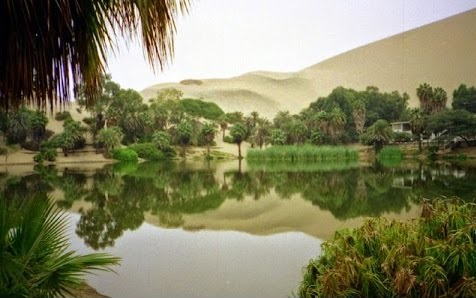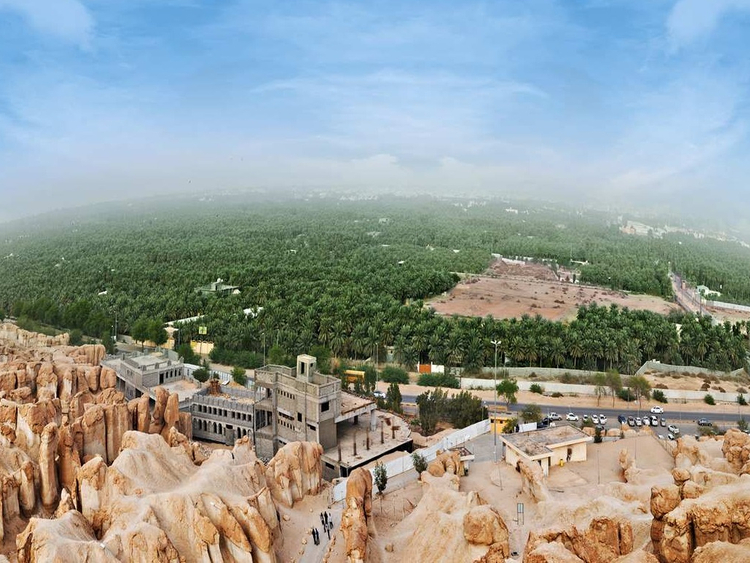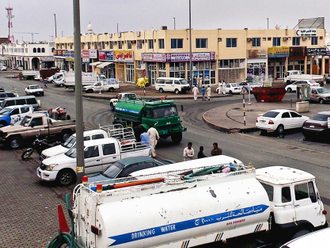
Manama: The sun-scorched Al Ahsa Oasis in the desert of Saudi Arabia, along with its hunting grounds, as well as World War I cemeteries, Art Deco heritage in Mumbai and Italy's Prosecco Hills are among 30 sites running to join Unesco's famous World Heritage Sites list.
The World Heritage Committee is holding a session from Sunday (June 24, 2018) in Bahrain to deliberate on the nominated sites.
Al Ahsa is one of the largest palm tree oasis in the world, with an area of 379 kilometres and 1.3 million inhabitants.
Saudi Arabia tourism drive: a guide
Ancient Saudi Arabia was once lush, green
Currently listed on Unesco's Creative Cities Network, the ancient city boasts of time-honoured tradition of handicrafts — considered as both cultural and social practices passed on from one generation to the next.
The desert oasis, located in the south-eastern province of Saudi Arabia, is considered one of the largest natural agricultural oasis in the world.
It is known for its vast tracks of palms spread over 10,000 hectares of agricultural land producing some of the world's best dates.
Add to this the production of Ahsa’ie rice and various fruits and vegetables.
Freshwater springs
The name of the oasis comes from the large number of springs in the area — ranging between 60 to 70.
In addition to freshwater springs, the oasis also has hot springs, with temperatures reaching up to 32 degrees Celsius.
The most famous of them is Ain Najm, characterized by its therapeutic warm sulfuric water.
Al Ahsa has geographical and strategic importance to ancient trade routes, contributing to its hisctoric importance.
It had cultural links with the ancient world civilizations in the Levant, Egypt and Mesopotamia.
Al Ahsa province is considered one of the oldest areas and many civilizations have originated there.
The greenest part in the eastern Saudi Arabia, Al-Ahsa Oasis has more than 1.5 million palm trees and is the largest.
Desert trading hub
Hundreds of years ago, it was a channel for the movement of trade caravans.
It is now categorised as one of the oldest human settlements in the Arabian Peninsula.
The area was first called Bahrain, then Hajar, and finally Al Ahsa.
Throughout history, it has been the gateway of the Arabian Peninsula to the outside world, a bridge between Gulf and the Indian sub-continent, as it was — and still is — a port that connects the Kingdom with other Gulf states.
Al Ahsa gained historical significance because it lies on the road between Yemen and Iraq. It is also home of Al Uqair port on the Arabian Gulf.
World Heritage Sites in Saudi Arabia
Saudi Arabia has a number of other sites on the Unesco World Heritage list, including Al-Hijr Archaeological Site (Madâin Sâlih); At-Turaif District in Ad- Dir'iyah; Historic Jeddah, the Gate to Makkah; and Rock Art in the Hail Region.
The World Heritage List Nominations
24 June to 4 July: Meeting of the World Heritage Committee in Bahrain. The committee will inscribe some of the 30 sites nominated for inclusion on Unesco’s World Heritage List during this meeting in Manama under the chair of Shaikha Haya Rashed Al Khalifa of Bahrain.
The proposed additions to the World Heritage List number five natural sites, including one extension to a site already inscribed, three mixed sites (i.e. both natural and cultural) and 22 cultural sites.
The advisory bodies’ evaluation of the proposed sites are available online and the debates of the session will be webcast.
Only countries that have signed the World Heritage Convention, pledging to protect their natural and cultural heritage, can submit nomination proposals for properties on their territory to be considered for inclusion in UNESCO’s World Heritage List.
Committee composition
The World Heritage Committee is comprised of representatives from 21 States Parties to the Convention concerning the Protection of the World Cultural and Natural Heritage elected by the General Assembly of States Parties to the Convention. The current composition of the Committee is as follows: Angola, Australia, Azerbaijan, Bahrain, Bosnia and Herzegovina, Brazil, Burkina Faso, China, Cuba, Guatemala, Hungary, Indonesia, Kuwait, Kyrgyzstan, Norway, Saint Kitts and Nevis, Spain, Tunisia, Uganda, United Republic of Tanzania, Zimbabwe.











